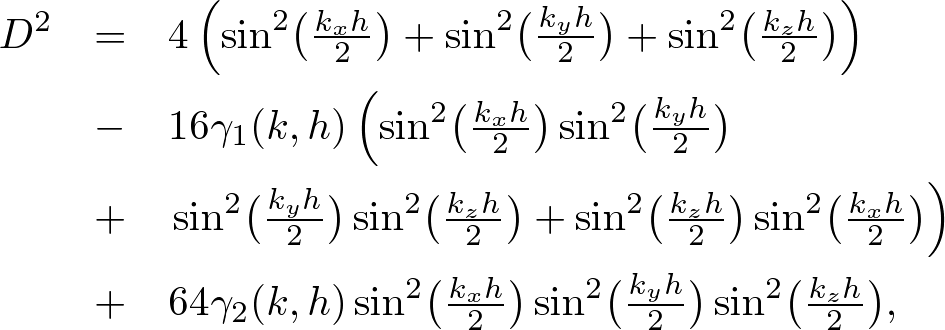Beginner Course
Intermediate Course
Advanced Course3. 3D StabilityThe numerical stability for the wave equation is given by where D is defined below. S-FDTD StabilityFor a monochromatic wave, ψ(x,y,z,t) = ei(kxx+kyy+kzz±ωt), we obtain where D is defined by dS2 ψ(x,y,z,t) = -D2ψ(x,y,z,t). To find max(D2), we solve  . . . (3) . . . (3)For cos(kxh/2) = cos(kyh/2) = cos(kzh/2), max(D2) is given by Since the stability of the S-FDTD algorithm is given by uS2 ≤ 4/max(D2), we obtain where we use h = Δt = 1. NS-FDTD StabilityIn the 3D NS-FDTD algorithm D2 is defined by  . . . (6) . . . (6)where D is defined by dNS2 ψ(x,y,z,t) = -D2ψ(x,y,z,t). To obtain max(D2), we solve and we find Substituting (8) into (6), we obtain Since the stability of the NS-FDTD algorithm is given by uNS2 ≤ 4/max(D2), we obtain  . . . (10) . . . (10)where we use k ∼ 0 and h = Δt = 1. In three dimensions, comparing with the S-FDTD stability, the value of v can be increased by about 35%.
Copyright (C) 2011 Naoki Okada, All Rights Reserved.
|